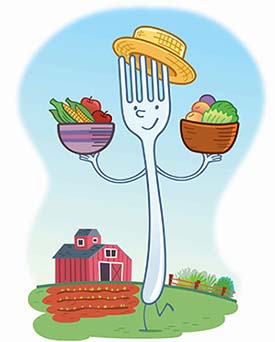 |
 |
| current issue |  | past issues |  | send a letter/news |  | address update |  | advertise |  | about us |  | alumni home |
Campus Currents
|
Field Work
New farm-to-fork course keeps UNH produce local. |
Easy to print version |
 Jim Paillot |
If the salads at the UNH Dairy Bar seem incredibly fresh, there's a good reason. Those tender baby greens and colorful radishes of different hues may have been harvested within the hour. Even well after the end of the growing season.
Thanks to a new sustainable agriculture course and two nearby "high tunnel" greenhouses, the Dairy Bar can make good on its promise to provide locally grown food year round—while students learn to apply new technology to an age-old approach to food production.
"The trend has been toward larger and fewer farms, with increased mechanization and decreased contact between grower and consumer," says Andrew Ogden, a lecturer in sustainable agriculture and food systems. But that trend may be changing, he notes, especially in New England, where smaller farms are on the rise.
Designed to give students the skills they need to meet the challenges of modern small-scale farming, Ogden's Food Production Field Experience class spans two semesters. The students plant crops in raised beds inside the high tunnels, using compost produced from dining-hall food waste. They learn about irrigation and keep pests at bay. Harvest and delivery continues long past the traditional fall months, thanks to the tunnels, a season-extending innovation pioneered—and still being studied—at UNH. Ogden hopes someday to provide produce for the UNH dining halls.
Students also learn how manage a farm, with a special focus on marketing. Growers who meet consumers face to face—on the farm or at the farmers market—can use social media and community events to build personal relationships, notes Ogden. "Successful growers are selling their products, but also themselves," he says.
The results are tangible. When "farm-to-fork" students walk into the Dairy Bar, they can see customers enjoying greens grown and harvested just down the road. They also see what they hope will be an increasingly important part of the future of farming, a future that looks an awful lot like the past—fresh, local, and sustainable.
blog comments powered by Disqus

